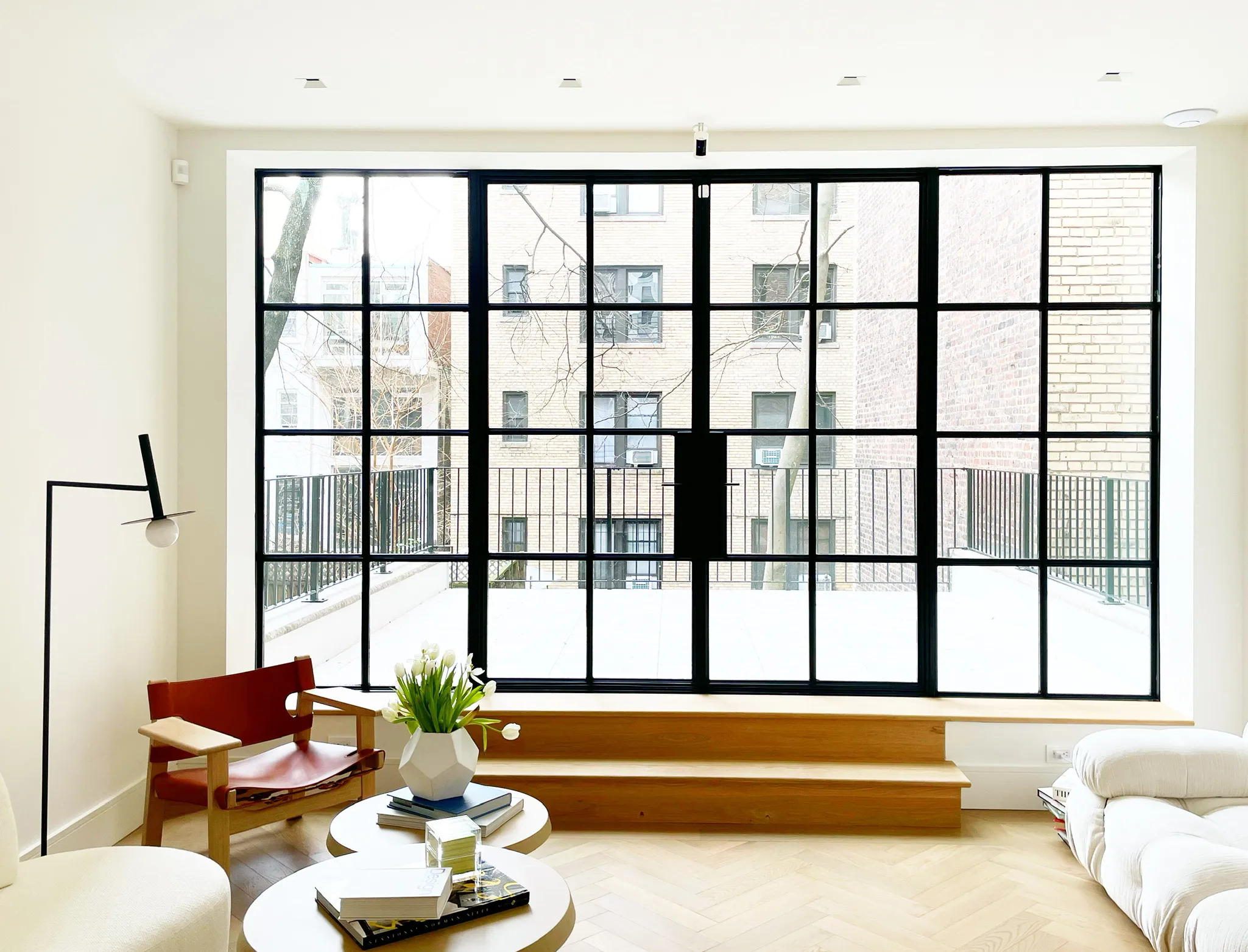
When it comes to choosing the right door for your home or commercial building, few materials match the strength, beauty, and longevity of steel. But beyond choosing between custom steel doors, luxury iron doors, or blackened steel doors, there’s one crucial decision that can impact comfort, efficiency, and performance — whether to go with thermal break steel doors or standard steel doors.
Understanding the difference between these two options is essential, especially if you’re designing for extreme hot or cold climates. In this post, we’ll break down the benefits of thermally broken steel doors, how they compare to standard steel models, and what kind of environments each is best suited for.
A thermal break steel door features a barrier — typically made from a low-conductivity material — placed between the inner and outer steel frames. This thermal barrier minimizes heat or cold transfer through the metal, greatly improving the door’s energy efficiency.
In contrast, a standard steel door has no such barrier. The steel frame can transfer outdoor temperatures directly to the interior, making it less efficient in environments with extreme weather fluctuations.
If you live in a region with mild temperatures year-round, a standard steel door may serve you just fine. But for climates that experience freezing winters or sweltering summers, thermal break steel doors can be a game changer.
Cold Climates: In colder regions, thermally broken steel doors help prevent interior heat from escaping and reduce condensation buildup on the metal frame. This makes them ideal for places like the Northeast, Midwest, and mountain regions.
Hot Climates: In hotter areas, they act as a buffer to keep outdoor heat from radiating indoors, reducing the strain on cooling systems. This makes them a favorite for homes and businesses in places like Texas, Arizona, and Southern California.
Whether you're designing custom entry doors for a lakeside cabin or custom pivot doors for a luxury desert home, the door's thermal performance should be a top consideration.
The good news is, you don’t have to sacrifice style for performance. Both thermal break steel doors and standard steel doors can be fully customized to match your aesthetic vision. That includes options like:
Custom sliding steel doors
Luxury interior doors
Custom wine room doors
Custom shower doors
Blackened steel doors
Luxury doors and windows for both residential and commercial applications
From modern steel doors (interior doors) to bold custom entry doors, thermal break technology can be seamlessly integrated into your design. You’ll still get the sleek lines and architectural appeal that designers love—plus added comfort and efficiency.
One of the major benefits of thermally broken steel doors is improved energy efficiency. By reducing heat transfer, these doors can significantly lower your heating and cooling costs over time. For residential clients, that means more consistent indoor comfort year-round. For commercial projects, it can also contribute to LEED certification and other green building standards.
While thermal break steel doors are typically more expensive upfront, the long-term savings on energy bills often offset the initial investment. And with rising energy costs, the appeal of improved insulation is only growing.
Both types of steel doors are known for their strength and durability. Custom steel doors and steel windows are naturally resistant to warping, rotting, and pest damage — making them a top choice for long-term value. However, thermal break steel doors have an edge in preventing interior condensation and ice build-up in colder areas, which helps preserve finishes and materials over time.
When paired with custom steel windows, sliding steel doors, or custom pivot doors, the performance of a well-insulated steel system can dramatically improve indoor climate control.
Here’s a quick guide based on your needs:
Choose Thermal Break Steel Doors if:
You live in a region with extreme hot or cold temperatures
Energy efficiency is a top priority
You want to reduce condensation or ice build-up
You’re building to meet green certifications or passive house standards
Choose Standard Steel Doors if:
You live in a mild or moderate climate
Budget is a primary concern
Energy efficiency is less of a priority
You want a more affordable way to achieve a luxury look
Whether you’re building a mountain lodge, a coastal retreat, or a sleek city loft, choosing between thermal break steel doors and standard steel doors depends on your climate, design priorities, and budget. The good news? No matter which you choose, custom steel doors, luxury doors and windows, and steel windows offer unparalleled style, strength, and longevity.
At the end of the day, both options can be tailored to your exact vision — whether you’re going for custom shower doors in a spa-like bath, custom wine room doors in a private cellar, or a show-stopping custom entry door for a grand entrance.
If you're ready to design doors and windows that suit both your climate and your style, reach out to start your custom quote. With nationwide shipping and expert craftsmanship, your perfect steel solution is just a step away!